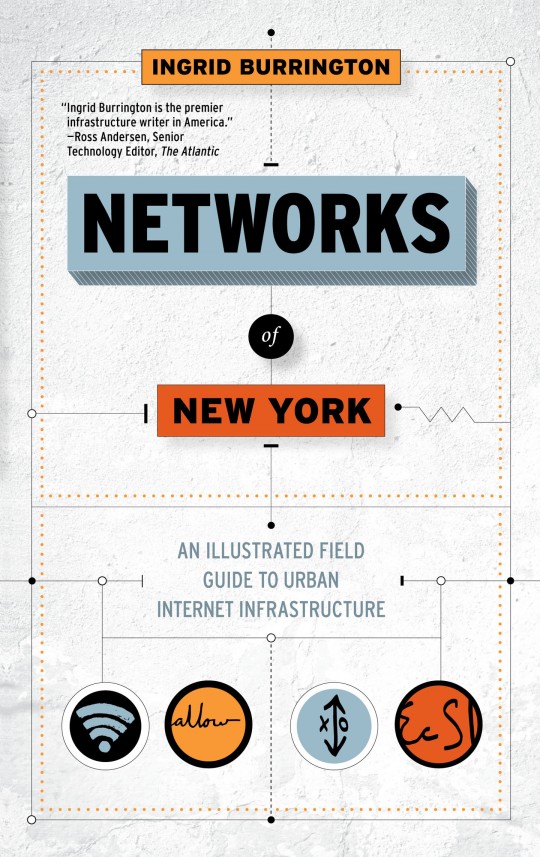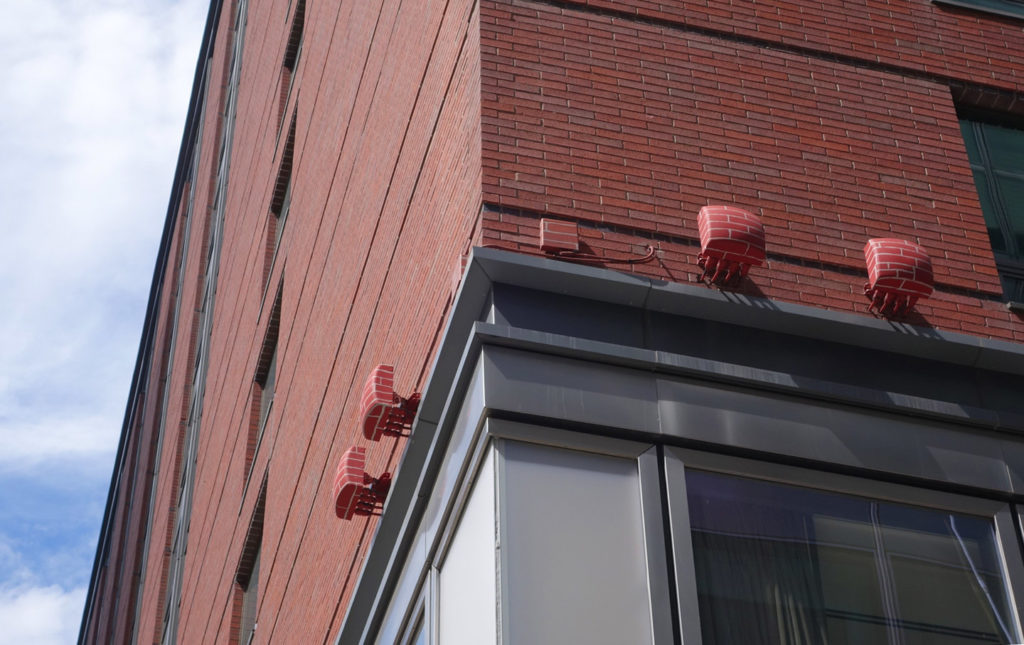A Walking Tour of New York’s Massive Surveillance Network
WHISTLEBLOWING - SURVEILLANCE, 26 Sep 2016
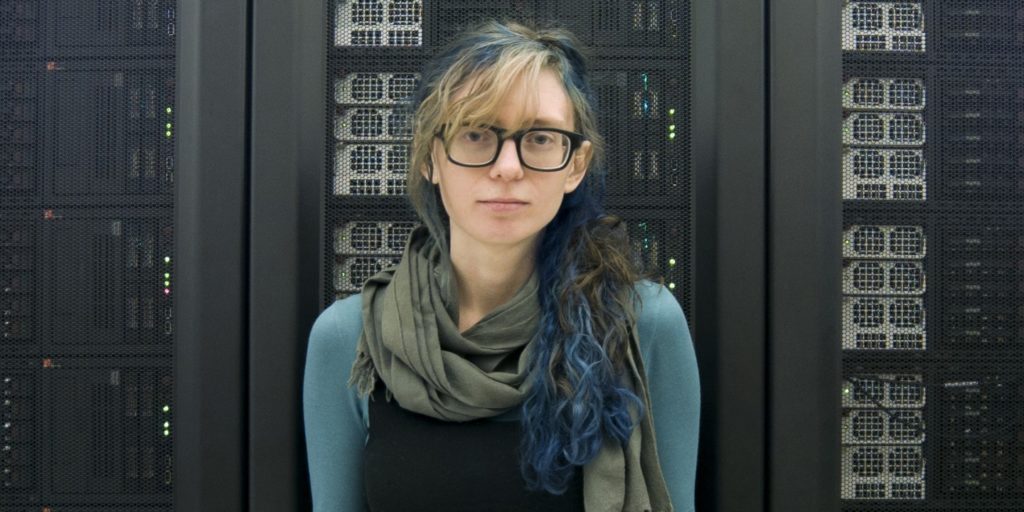
Ingrid Burrington, author of the new book “Networks of New York: An Illustrated Field Guide to Urban Internet Infrastructure.”
Credit: Jonathan Minard
24 Sep 2016 – Earlier this month, on the 15th anniversary of the 9/11 attacks, the lower tip of Manhattan was thronged with soldiers in uniform, firefighters marching with photos of lost friends pinned to their backpacks, and tourists bumbling around the new mall at the World Trade Center. Firetrucks and police cars ringed Zuccotti Park and white ribbons adorned the iron fence around the churchyard on Broadway. Trash cans were closed up, with signs announcing “temporary security lockdown.”
So it felt a bit risky to be climbing up a street pole on Wall Street to closely inspect a microwave radar sensor, or to be lingering under a police camera, pointing and gesturing at the wires and antenna connected to it. Yet it was also entirely appropriate to be doing just that, especially in the company of Ingrid Burrington, author of the new book “Networks of New York: An Illustrated Field Guide to Urban Internet Infrastructure,” which points out that many of the city’s communications and surveillance programs were conceived and funded in response to the attacks.
In her book, Burrington, a writer and artist, has sketched the pieces of the internet that are visible on and above the streets of the city, and has explained the business interests and politicking behind their installation. Her book is designed to make the internet tangible, and with that in mind, Burrington (who I first met when she worked on a software project for The Intercept) agreed to take me and a friend on a tour of what she found in the financial district.
We began outside 55 Broadway, an office building a few blocks north of the famous bronze bull statue, and eyed a black NYPD-branded camera above the building’s entrance. I used to work in this building, when ProPublica had its offices there, and I remember awkward elevator rides with armed counterterrorism cops. The building is home to the city’s Domain Awareness System, which collects and analyzes information from police cameras, radars, license plate readers and more. The Domain Awareness System was built in partnership with Microsoft, which is selling the software to other cities, with New York getting a cut of the profits. According to Burrington, a number of the system’s cameras belong to private entities, including companies like Goldman Sachs and Pfizer, who have access to the facilities at 55 Broadway.
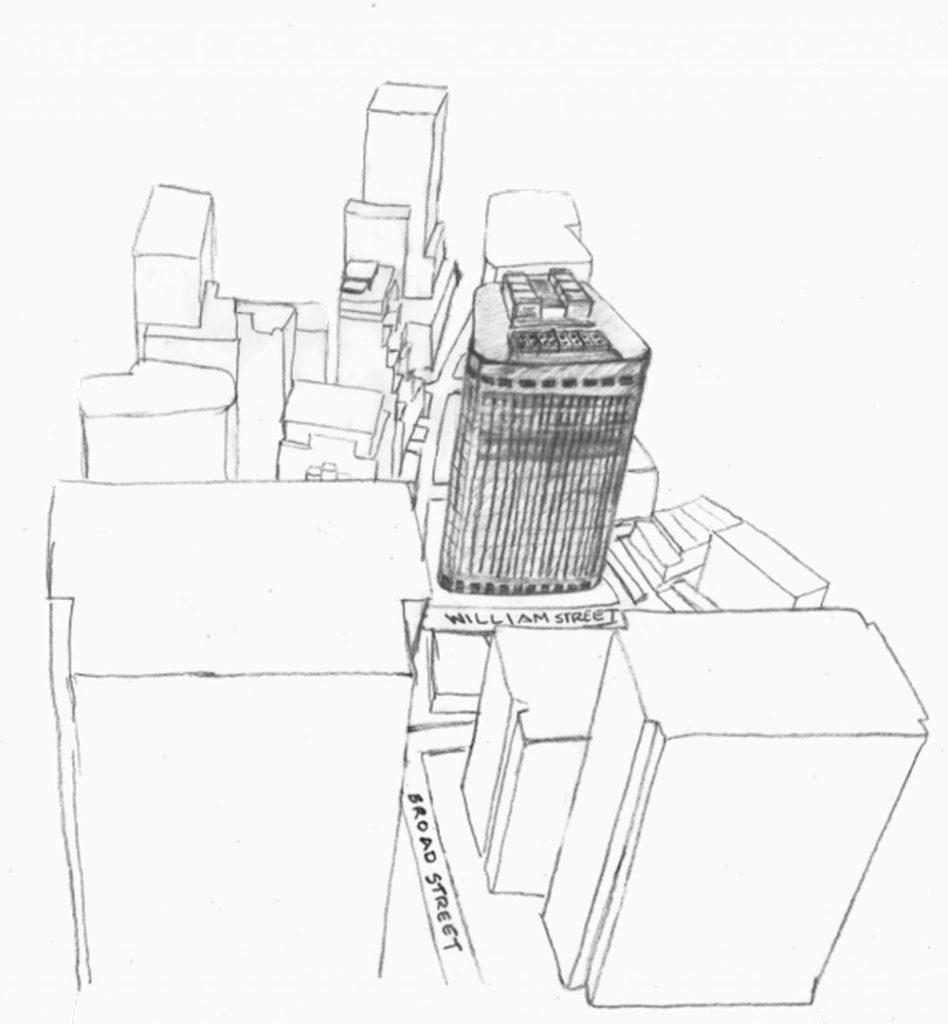
Burrington’s sketch of 75 Broad Street, which was once home to the International Telephone and Telegraph Company and now contains data centers.
Illustration: Ingrid Burrington
We crossed the street, which was marked with orange squiggles — orange being the surveyor’s color for marking underground communications cables. The symbols in the intersection indicated fiber-optic and cable TV. “The internet, is, in fact, a series of tubes,” Burrington writes in her guide. And downtown Manhattan, she adds, is “really crowded underground.”
At each intersection, we looked for NYPD cameras and information-gathering devices owned by the Department of Transportation. Burrington pointed out green boxes sporting little domes; those are signal-control boxes that collect data from traffic cameras, EZ-Pass scanners, and microwave radar sensors, in order to track the movements of cars and regulate traffic lights accordingly. There are plenty of urban planning reasons for this data collection, but Burrington notes, “every camera that belongs to a city agency is essentially also an NYPD camera.”
A lot of internet infrastructure resides in buildings that once housed earlier modes of communication, and those building still bear the aesthetic of another era. Early 20th-century communications companies liked ornate decor, especially lightning bolts, in contrast to the bland or cutesy logos that today’s internet giants hide behind. We went to 75 Broad Street, once home to the International Telephone and Telegraph Corporation. Over its doorway is a colorful mosaic of an angel with a lightning bolt and two globes showing the Northern and Southern Hemispheres. Among other things, the building now houses a data storage center.
Verizon, meanwhile, occupies an Art Deco skyscraper on West Street that was once the New York Telephone Company. Before being shooed out by a guard, we got a glimpse of a lobby ceiling illustrated with imperialist motifs of communications across cultures of the world, like two African figures drumming.
Equipped with Burrington’s guide, you start to spot things. Above a restaurant, we noticed some rectangular cell towers that have been hand-painted to look like the brick wall behind them — the urban version of highway cell towers you may have seen masquerading as pine trees.
I asked Burrington what she hoped people would do with her guide. It is empowering to know what you’re looking at, but also overwhelming to consider the scale of the apparatus around you. Burrington described a public records battle she lost to get the locations of NYPD cameras; the city said the data could help criminals. In the process, Burrington realized that the data she was seeking wouldn’t account for unmarked cameras and privately owned cameras that could be turned over to police. To map the entire surveillance network of a city would require a huge effort and become quickly outdated.
Instead, her aim is “fostering curiosity,” she said. On a local level, organizing to get data for specific purposes could be politically useful; you could look at disparities in high-speed internet access, or you could look for evidence of over-policing. Or just ask simple questions like, “Who owns stuff, why does it end up where it ends up, and who does it benefit?”
“It’s good to know Microsoft is a corporation who has a large stake in New York City’s surveillance systems continuing, and expanding them to other cities,” Burrington said.
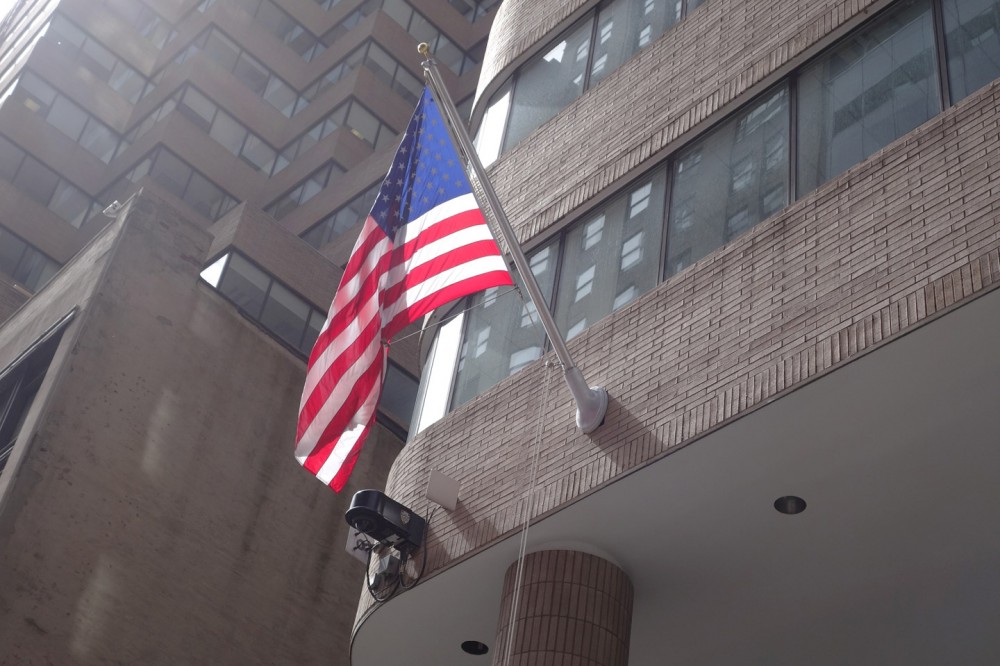
An NYPD camera at 55 Broadway, headquarters of the city’s Domain Awareness System.
Photo: Cora Currier for The Intercept
Or take LinkNYC, a new program to make old phone booths into WiFi kiosks around the city. LinkNYC is run by a private entity, and it’s been mostly able to brush off concerns about its privacy policy. It’s also largely immune to public records requests.
Then there’s Lockheed Martin, which is engaged in a lawsuit with the MTA over a much-delayed program to install surveillance cameras in the subway. “Valid privacy and civil liberties concerns aside,” Burrington says, “you also have these boondoggles, where the equipment is not even doing what it is supposed to.”
Burrington points out that infrastructure is often designed to be ignored. The field guide, with its cheerful drawings of manhole covers and cable markings, turns the infrastructure into something ordinary and familiar, not intimidating, and not some magical process by which videos and images appear in your phone.
“If it’s effective, it’s invisible,” she says. “But if it’s taken for granted, we lose the ability to make decisions about how it’s used.”
_______________________________
Cora Currier – ✉cora.currier@theintercept.com
Go to Original – theintercept.com
DISCLAIMER: The statements, views and opinions expressed in pieces republished here are solely those of the authors and do not necessarily represent those of TMS. In accordance with title 17 U.S.C. section 107, this material is distributed without profit to those who have expressed a prior interest in receiving the included information for research and educational purposes. TMS has no affiliation whatsoever with the originator of this article nor is TMS endorsed or sponsored by the originator. “GO TO ORIGINAL” links are provided as a convenience to our readers and allow for verification of authenticity. However, as originating pages are often updated by their originating host sites, the versions posted may not match the versions our readers view when clicking the “GO TO ORIGINAL” links. This site contains copyrighted material the use of which has not always been specifically authorized by the copyright owner. We are making such material available in our efforts to advance understanding of environmental, political, human rights, economic, democracy, scientific, and social justice issues, etc. We believe this constitutes a ‘fair use’ of any such copyrighted material as provided for in section 107 of the US Copyright Law. In accordance with Title 17 U.S.C. Section 107, the material on this site is distributed without profit to those who have expressed a prior interest in receiving the included information for research and educational purposes. For more information go to: http://www.law.cornell.edu/uscode/17/107.shtml. If you wish to use copyrighted material from this site for purposes of your own that go beyond ‘fair use’, you must obtain permission from the copyright owner.
Read more
Click here to go to the current weekly digest or pick another article:
WHISTLEBLOWING - SURVEILLANCE:
